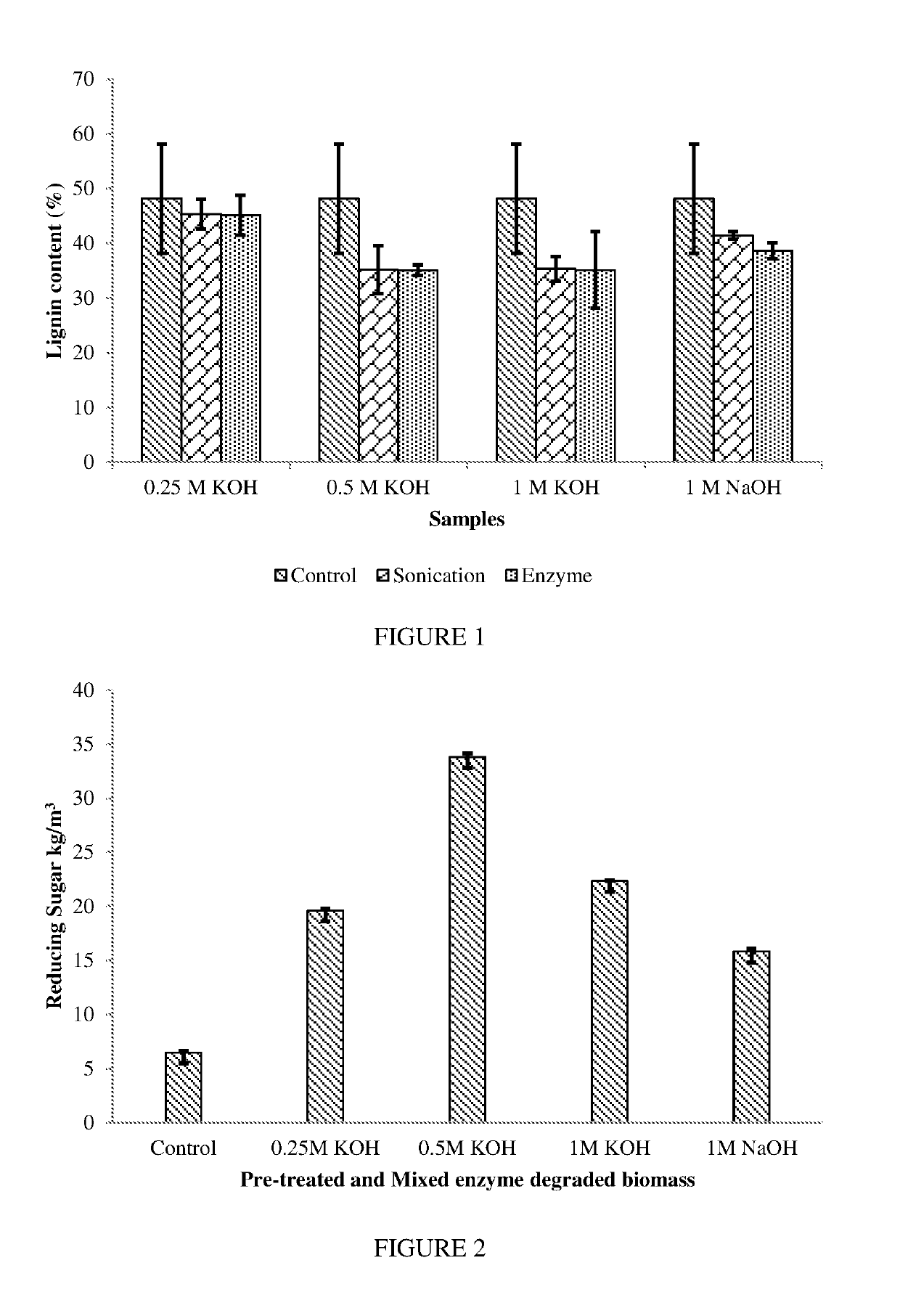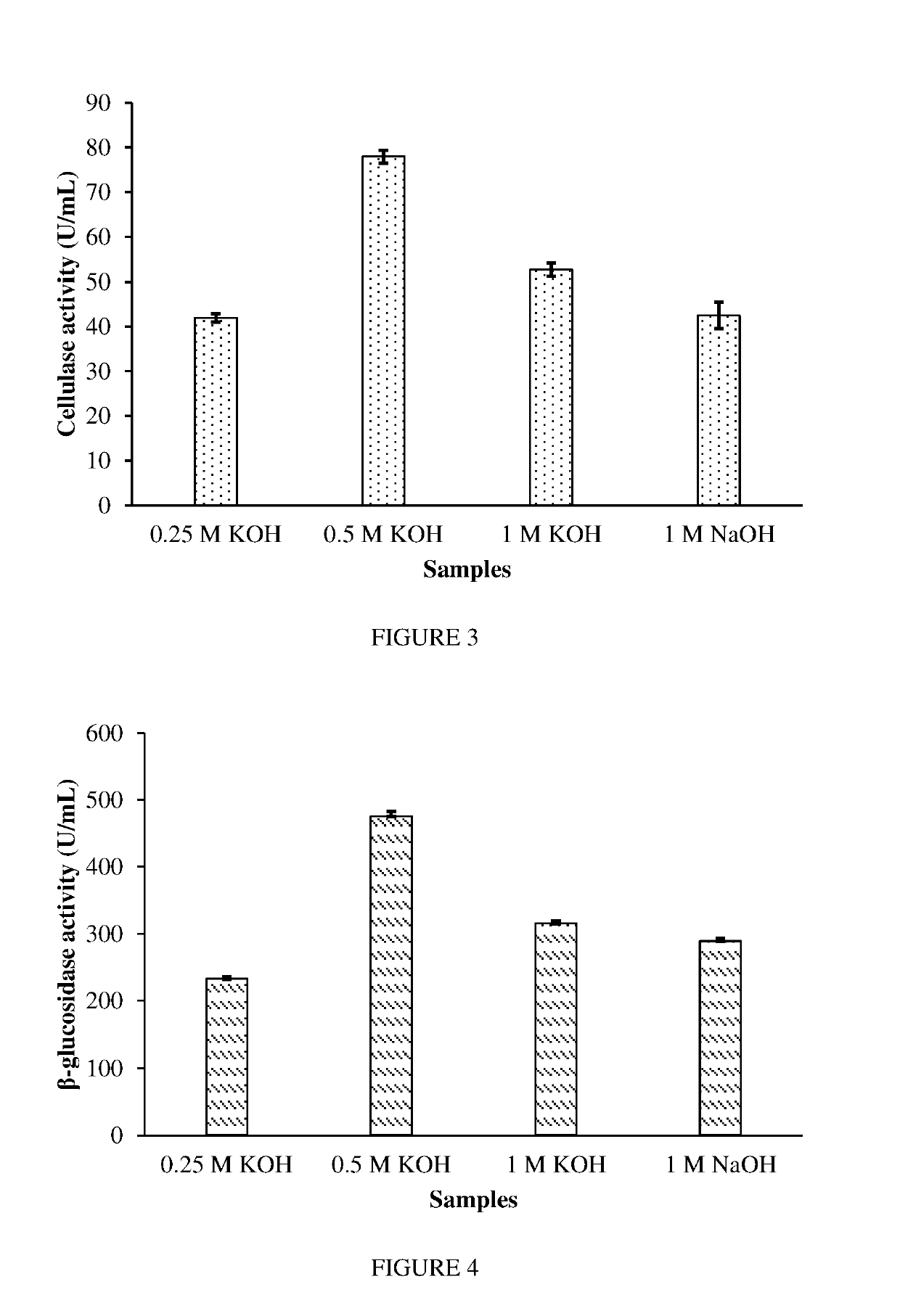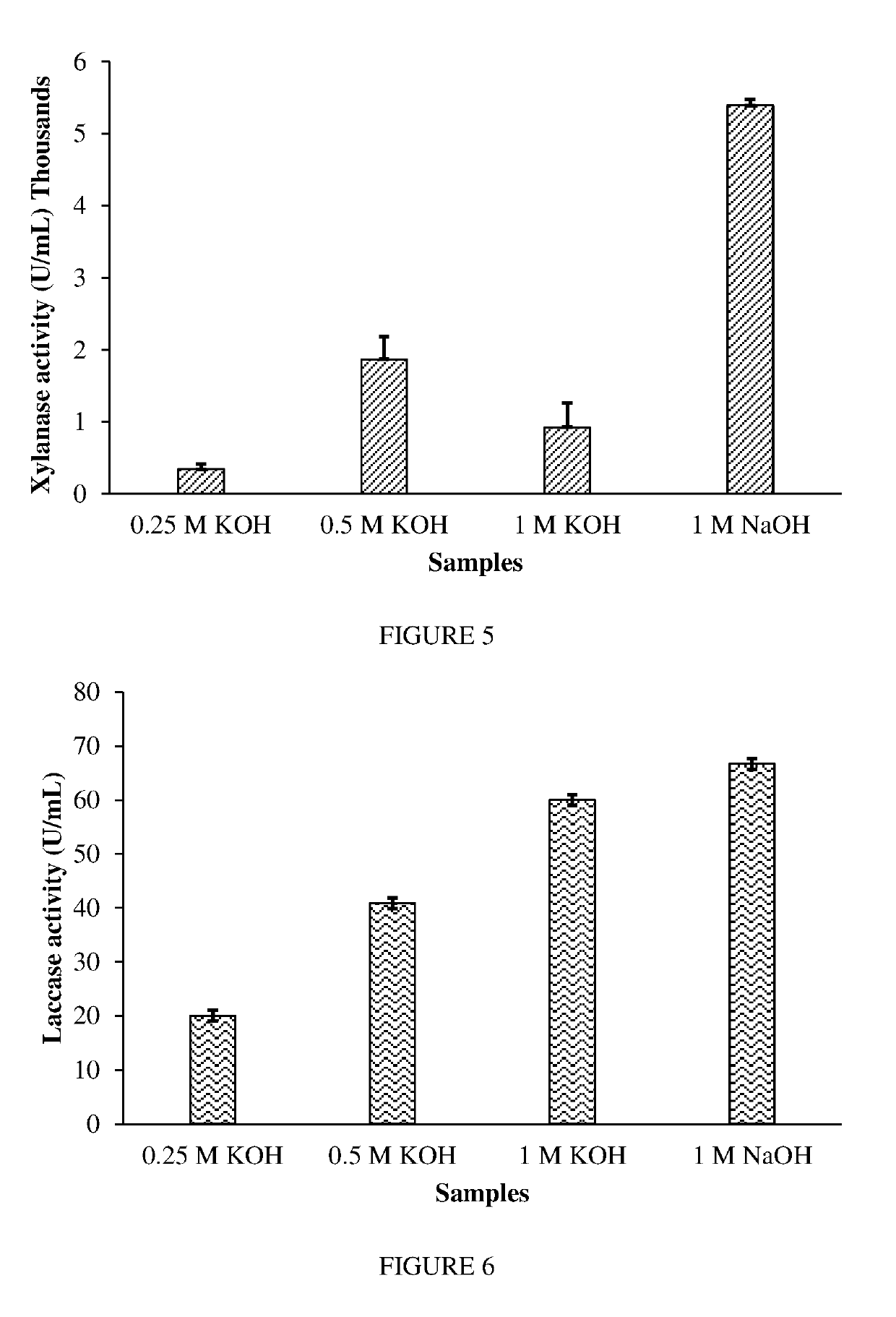A Method of Obtaining Useful Material from Plant Biomass Waste
a biomass waste and useful material technology, applied in the field of obtaining useful material from plant biomass waste, can solve the problems of biomass waste, pressing issues in the collection, storage, processing and disposal of plant waste, and the safe storage of sugarcane biomass was
- Summary
- Abstract
- Description
- Claims
- Application Information
AI Technical Summary
Benefits of technology
Problems solved by technology
Method used
Image
Examples
example 1
n and Analysis of Metabolites from Grape Biomass Materials
[0043]Grape biomass of Vitis vinifera var. Cabernet was acquired from the Australian Wine Research Institute (AWRI), Glen Osmond, South Australia, Australia. The grape biomass was dried at 50° C. overnight and then used for experiments. Fungal cultures of Trichoderma harzianum and Penicillium chrysogenum were acquired from Agpath Pty Ltd., Vervale, Victoria, Australia. Fungal cultures of Aspergillus niger, Penicillium citrinum were obtained from the culture collection of Swinburne University of Technology. Trametes versicolor and Phanerochaete chrysosporium were kindly supplied by the culture collection of Manufacturing Flagship, Commonwealth Scientific and Industrial Research Organization (CSIRO), Clayton, Victoria, Australia. All fungi were cultured on aseptic Sabouraud Dextrose medium composed of Sabouraud Dextrose powder (30 g / L) and Agar (15 g / L).
[0044]The American Association of Textile Chemists and Colourists (AATCC) m...
example 2
Acid Production from Winery Biomass Waste Using Ultrasonication Treatment
Materials and Methods
[0077]Grape biomass of Vitis vinifera var. Cabernet was acquired from the Australian Wine Research Institute (AWRI), Glen Osmond, SA, Australia. The grape biomass was dried at 50° C. overnight and was used for further analysis. Sonication pre-treatment was applied to the grape biomass using a sonicator (Model: Q700; Qsonica, LLC., CT, USA). Dried grape biomass (5 g) was mixed with 20 mL of distilled water and was sonicated for 10, 20 and 40 minutes. The sonication parameters used were: Amplitude=100%, Power=700 W and Frequency=20 kHz. During the optimization steps, 20 minutes of sonication were observed to be the most efficient. Therefore, for all experimental purposes, 20 minutes of sonication was applied. Sonicated samples were then centrifuged at 4000 g / 15 minutes. The supernatant was transferred to a fresh tube and was frozen at −80° C. for 1 hour before drying. The frozen sample was fr...
example 3
l Scale Processing of Plant Biomass Waste
[0085]Grape biomass is pre-treated by microwave power (in 1% H2SO4) for various time periods (2-6 minutes). The liquid supernatant is removed and neutralised, followed by Saccharomyces cerevisiae yeast fermentation to generate ethanol. The remaining biomass is sonicated (in 2.8% KOH) for 20 minutes. The resultant filtrate is discarded and biomass further degraded by mixed fungal enzymes of Basidiomycetes (Ph. chrysosporium and T. versicolor in a percent ratio of 1:1) for 18-20 hours. Further degradation is achieved using Ascomycete enzymes (A. niger, P. chrysogenum, T. harzianum and P. citrinum in a percent ratio of 60:14:4:2) for 18-20 hours. The resultant metabolites produced during this fermentation is analysed by GC-MS.
PUM
| Property | Measurement | Unit |
|---|---|---|
| Time | aaaaa | aaaaa |
Abstract
Description
Claims
Application Information
 Login to View More
Login to View More - R&D
- Intellectual Property
- Life Sciences
- Materials
- Tech Scout
- Unparalleled Data Quality
- Higher Quality Content
- 60% Fewer Hallucinations
Browse by: Latest US Patents, China's latest patents, Technical Efficacy Thesaurus, Application Domain, Technology Topic, Popular Technical Reports.
© 2025 PatSnap. All rights reserved.Legal|Privacy policy|Modern Slavery Act Transparency Statement|Sitemap|About US| Contact US: help@patsnap.com



